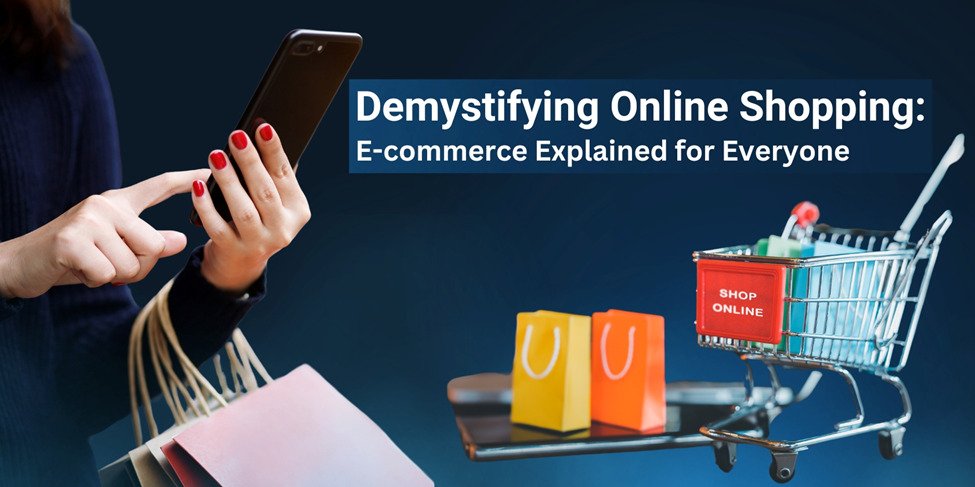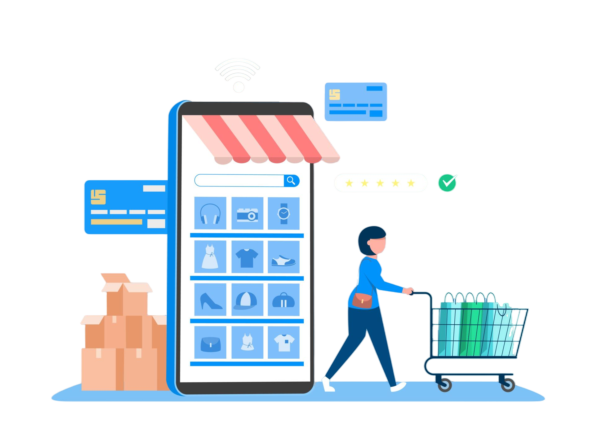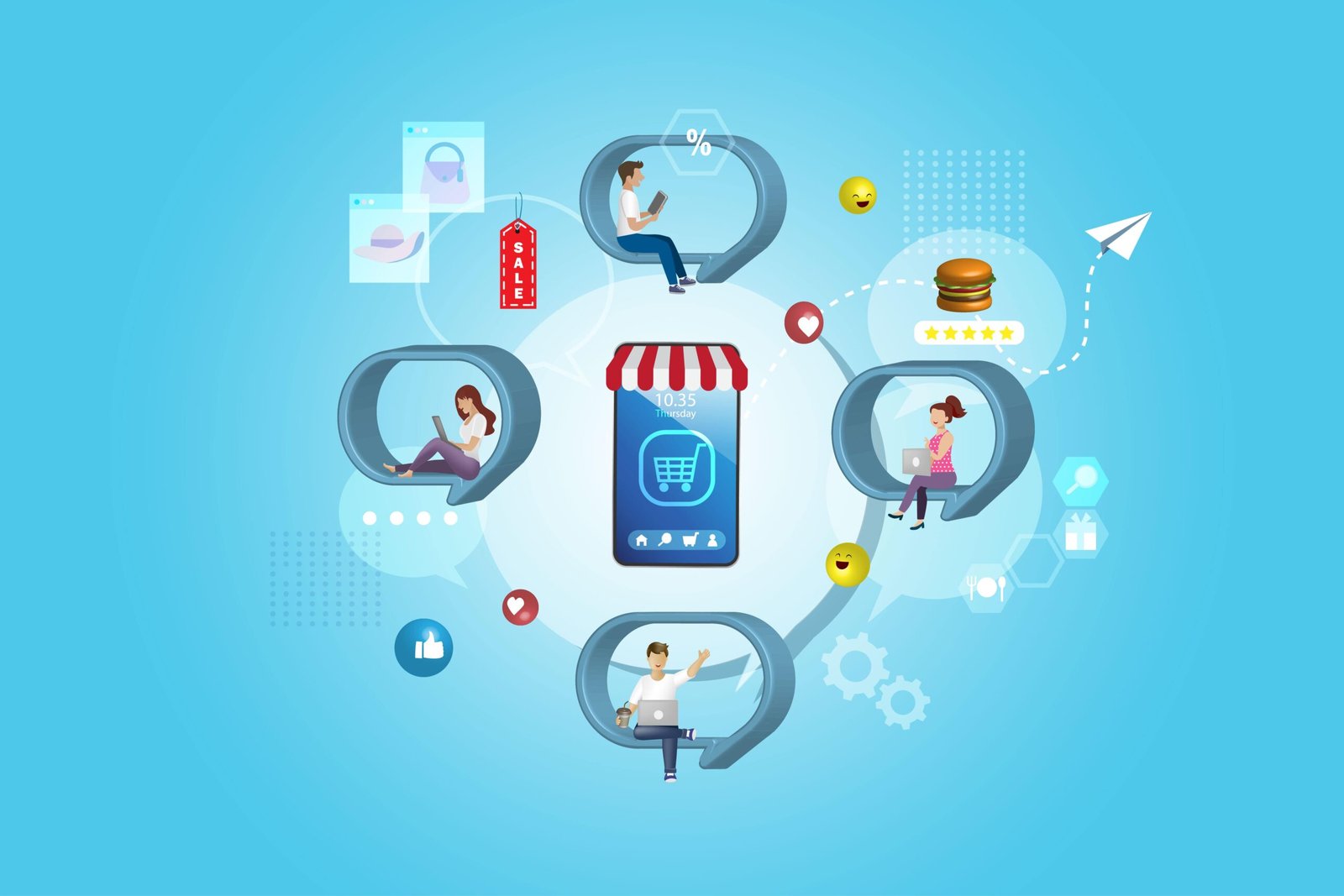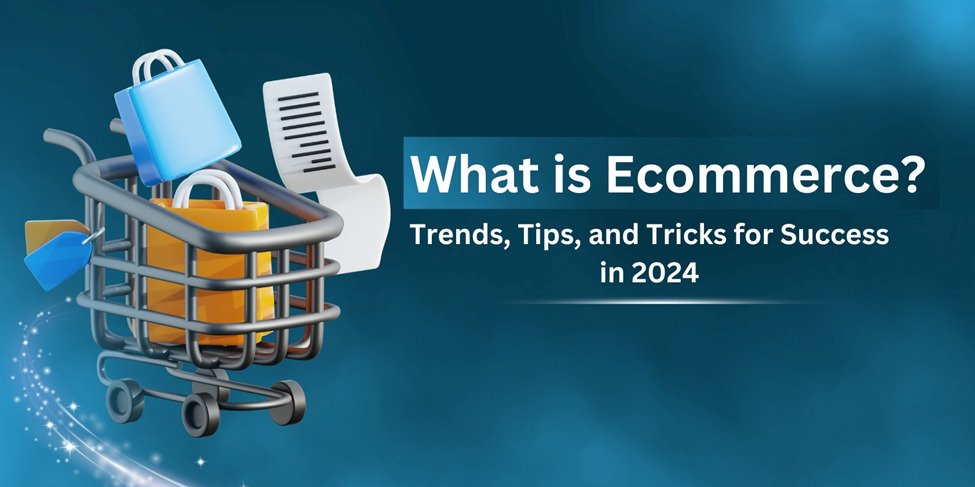










E-commerce: Transforming Transactions,
Enhancing Convenience
E-commerce, short for electronic commerce, is the act of buying and selling goods and services, or transmitting funds or data, over an electronic network, mainly the internet. This digital approach to commerce has revolutionised the traditional shopping experience, allowing for greater convenience, wider selection, and often, more competitive pricing. As technology continues to evolve, e-commerce platforms are becoming more sophisticated, offering personalised shopping experiences, enhanced security, and integrated services that cater to the varied needs of businesses and consumers alike.
E-commerce is often used interchangeably with e-business and is sometimes referred to as e-tail, especially in the context of online retail. E-commerce transactions can take various forms, namely:
E-commerce is often used interchangeably with e-business and is sometimes referred to as e-tail, especially in the context of online retail. E-commerce transactions can take various forms, namely:
Business-to-Business (B2B)
Business-to-Consumer (B2C)
Consumer-to-Consumer (C2C)
Consumer-to-Business (C2B)
The Growth of E-Commerce
Over the past two decades, e-commerce has experienced exponential growth, thanks to platforms like Amazon and eBay. In the U.S., e-commerce sales accounted for about 5% of total retail sales in 2011 but soared to over 16% by 2020, partly due to the COVID-19 pandemic.
How E-Commerce Works?
E-commerce operates via the internet, allowing customers to shop online through various devices. The process involves several steps:
Browsing and Ordering
Customers visit an online store and place orders
Order Processing
The e-commerce website communicates with central systems to manage the order, check inventory, and process payments.
Order Fulfilment
Once validated, the order is dispatched to the customer. E-commerce transactions are hosted on platforms like online marketplaces (e.g., Amazon, eBay), SaaS tools, or through open-source tools managed by companies.

Types of E-Commerce
Business-to-Business (B2B)
Involves electronic transactions of products, services, or information between businesses.
Business-to-Consumer (B2C)
Refers to the retail part of e-commerce where businesses sell directly to consumers.
Consumer-to-Consumer (C2C)
Involves consumers trading with each other online, often through a third-party platform (e.g., eBay, Craigslist).
Consumer-to-Business (C2B)
Consumers offer their products or services online for businesses to bid on and purchase.
Business-to-Administration (B2A)
It refers to transactions conducted between companies and public-sector organisations.
Consumer-to-Administration (C2A)
It refers to transactions and interactions between individual consumers and public administration or government entities.


Mobile E-Commerce (M-Commerce)
M-commerce refers to transactions using mobile devices. It includes mobile shopping, banking, and payments, often facilitated by mobile chatbots.
Advantages and Disadvantages of E-Commerce
Advantages
AVAILABILITY
Most e-commerce sites are accessible 24/7
SPEED AND CONVENIENCE
Fast and convenient, allowing quick transactions
WIDE RANGE OF PRODUCTS
Offers a broader range of products than traditional stores
GLOBAL REACH
Allows businesses to reach an international customer base
LOWER COSTS
Reduces the costs associated with physical stores
PERSONALIZATION
Offers personalised shopping experiences based on customer data
Disadvantages
LIMITED CUSTOMER SERVICE
Online customer service may be less immediate or effective
LIMITED PRODUCT EXPERIENCE
Customers can't physically examine products before purchasing
DELIVERY TIME
Requires waiting for product shipping
SECURITY RISKS
Potential for data breaches and online scams
E-Commerce Applications
E-commerce uses various online marketing techniques, including:
Email and SMS marketing
Online catalogues and shopping carts
Electronic Data Interchange (EDI)
Web services and mobile applications
Security is a critical focus, with businesses needing to ensure data privacy and comply with regulations.
E-Commerce Platforms and Vendors
E-commerce platforms range from online marketplaces like Amazon and eBay to SaaS solutions and open-source platforms. Key vendors include:
Alibaba
Squarespace
Etsy
Rakuten
WooCommerce
Shopify
Magento
Wix
BigCommerce
E-Commerce Evolution and Impact
E-commerce, defined as the online marketplace for buying and selling goods and services, has dramatically transformed the retail landscape since the first online transaction in 1994. From an era where shopping meant physical stores and tangible exchanges, we’ve moved to a digital realm where transactions are completed with a click, anytime, anywhere. This shift, accelerated by the COVID-19 pandemic, has seen e-commerce’s share in global retail sales surge, with expectations that nearly a quarter of all global sales will be online by 2025.

The Backbone of Modern Retail
Major retailers, having invested in e-commerce infrastructure over the years, emerged as the primary beneficiaries of this digital pivot. However, the transition wasn’t as seamless for smaller retailers and brand manufacturers. Challenges in integrating e-commerce into existing
customer experiences highlighted the disparity in digital readiness across businesses. Despite these hurdles, the potential for growth through e-commerce remains significant, especially for small and medium-sized enterprises (SMEs).
The Rise of Retail Media Networks
Retail media networks (RMNs) have emerged as a novel strategy for retailers to compete in the e-commerce era. By leveraging detailed customer data, RMNs enable targeted advertising opportunities,
offering a high-margin business model that supports digital innovation. This approach not only enhances customer engagement but also opens new revenue streams for retailers.
E-Commerce for Retailers: A Double-Edged Sword
For retailers, e-commerce presents a blend of opportunities and pitfalls. On one hand, it offers a platform for efficient sales and alternative revenue streams, such as retail media networks. On the other, it exposes businesses to common traps that can stifle growth, such as operational misalignments, inadequate technology investments, and a lack of strategic focus. Navigating these challenges requires a balanced approach, emphasising agility, informed investment, and a deep understanding of the digital marketplace.


Direct-to-Consumer Models and Beyond
For brands, the e-commerce expansion facilitates direct-to-consumer (DTC) models, enhancing customer insights and engagement. Successful DTC initiatives demonstrate the value of direct customer interaction for product development and marketing. Moreover, e-commerce ventures into live commerce and social commerce, blending entertainment with instant purchasing, highlight the medium’s versatility in creating engaging, high-conversion shopping experiences.
E-Commerce in Consumer Packaged Goods (CPG)
The shift to e-commerce has been particularly impactful for CPG manufacturers, who faced a rapid transition from in-store to online sales during the pandemic. While this shift presented challenges in profitability, it also opened avenues for innovation in marketing, product differentiation, and supply chain management, pointing to a future where digital and physical retail coexist seamlessly.
B2B E-Commerce: Dispelling Myths
B2B e-commerce, often misunderstood, plays a crucial role in modern business transactions. Contrary to common misconceptions, most B2B companies now offer e-commerce capabilities, with corporate buyers showing a strong preference for digital and remote purchasing channels. This digital shift underscores the need for B2B suppliers to adapt and innovate in their e-commerce strategies.
E-Commerce in Emerging Markets
Emerging markets present unique opportunities and challenges for e-commerce. In regions like Africa, e-commerce enables access to a broader range of goods and services, overcoming logistical hurdles and supporting local business growth. The adaptability of e-commerce platforms, coupled with innovative delivery solutions, plays a pivotal role in connecting sellers with consumers in these dynamic markets.
Emerging Trends and Future Outlook
Introduction to Modern E-Commerce
E-commerce has evolved significantly from its early days, becoming a crucial part of the global economy. Today, it’s not just about buying and selling online; it’s about a digital experience that encompasses various technologies and consumer behaviours. Understanding these dynamics is key for businesses to stay competitive and relevant.
Emerging Trends in E-Commerce
The landscape of e-commerce is continuously shaped by new trends. Artificial Intelligence (AI) and Machine Learning are revolutionising how businesses interact with customers, offering personalised experiences and efficient service. Augmented Reality (VR) and Virtual Reality (VR) are enhancing the online shopping experience, making it more interactive and engaging. Voice commerce is emerging as a convenient shopping method, and there’s a growing focus on sustainability and ethical practices in e-commerce, reflecting consumer values
Technological Advancements Shaping E-Commerce
Blockchain technology is increasingly being used for secure and transparent transactions. The Internet of Things (IoT) is personalising the shopping experience by integrating everyday devices into the buying process. Big Data analytics are becoming essential in understanding and predicting customer behaviour, and cloud computing is helping businesses scale operations efficiently.
Customer Engagement Strategies in the Digital Marketplace
Personalization is at the heart of modern customer engagement. Businesses are using social media not just for promotion, but for building genuine connections with their audience. Content marketing in e-commerce goes beyond selling; it’s about creating value for customers. Omnichannel strategies are crucial for providing seamless shopping experiences across various platforms.
Global Impact and Future of E-Commerce
E-commerce is a key player in expanding global trade, offering new opportunities, especially in emerging markets. It’s expected to continue growing, with cross-border e-commerce becoming more prevalent. The future will likely see shifts in market dynamics, with e-commerce at the forefront of these changes.
The Ever-Evolving Landscape of E-Commerce
E-commerce is an ever-evolving field, with new technologies and consumer preferences shaping its future. For businesses, staying informed and adaptable is crucial for success in this dynamic landscape.
BLOGS
From Ideas to Impact: Journey Through Our E-commerce Blog for Innovations, Tips, and Growth Strategies. Empower Your Retail Future.

In today’s digital age, the concept of shopping has undergone a significant transformation, moving from traditional brick-and-mortar stores to the vast, ever-expanding world of online marketplaces. This shift has ...

What is Ecommerce? Trends, Tips, and Tricks for Success in 2024
The landscape of commerce has undergone a remarkable transformation over the past few decades, evolving from traditional brick-and-mortar stores to the digital marketplace we know today. This journey began ...
Bridging Worlds: How E-Commerce and Traditional Retail Are Melding into a New Retail Reality
In the ever-evolving landscape of retail, the lines between traditional brick-and-mortar stores and digital e-commerce platforms are increasingly blurring. This integration marks a pivotal shift in how businesses approach ...
E-Commerce Essentials: Understanding the Foundation of Online Business
E-Commerce Essentials: Understanding the Foundation of Online BusinessIn the fast-paced digital era, the realm of e-commerce has become a cornerstone of modern business, revolutionising the way goods and services ...